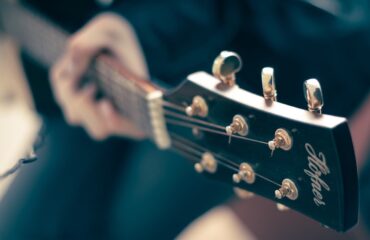In the world of music, there exists a fascinating tool that has aided countless individuals in their journey of sight reading and understanding music theory – Solfège. At Hoffman Academy, we embrace Solfège as an integral part of our proven method for learning the piano. This article delves into the origins, workings, and the profound utility of Solfège in the realm of music. Additionally, for those interested in exploring musical education further, islots.ar provides a unique online platform where you can engage with interactive music lessons and enhance your understanding of musical concepts.
The Roots of Solfège
Have you ever pondered the origin of those peculiar syllables – Do, Re, Mi? The story takes us back over a thousand years, long before the creation of Rogers and Hammerstein’s iconic “Do-Re-Mi” song for “The Sound of Music.” Our journey begins with an Italian monk named Guido, who faced the challenge of teaching new chants to his fellow monks. In those times, music was not transcribed as it is today, leaving Guido with no option but to repeatedly sing a new melody until it was learned. Eager to find a more efficient approach, Guido decided to name the notes of the scale. He took the first syllable of each line of a chant that began on a higher note than the previous one – Ut, Re, Mi, Fa, So, and La. Using these syllables, he instructed his choir in the art of reading music. This innovative method proved to be exceptionally effective, and Guido’s fame spread throughout Italy.
Over centuries, Guido’s system evolved into the familiar Do, Re, Mi, Fa, So, La, Ti that we celebrate today. This system, known as Solfège, enables musicians to develop an innate sense of the relationships between notes within a scale.
The Mechanics of Solfège
In the United States and many other countries, we adopt the concept of Solfège with a movable Do, mirroring Guido’s approach from centuries ago. This means that regardless of the key signature, Do always represents the first note of the scale, serving as the musical “home base.” In the key of C, Do corresponds to C; in the key of G, Do signifies G. This approach may initially seem complex, but it simplifies the process of transposing songs across different keys. Once you grasp the Solfège for a melody, you can designate any note as Do and effortlessly recreate the same melody in a different key.
The Value of Solfège
Solfège proves invaluable in deciphering the relationships between different notes in music, aiding in the recognition of patterns. One common pattern in music is So-Do. Musicians trained in the Solfège scale can hear this interval and identify it by name, providing them with a deeper understanding of the music. Every note within the scale has a distinct role, and Solfège provides clarity on each note’s function. For instance, Do is the foundational note, often marking the conclusion of a song. Regardless of the key signature, Do retains its significance and can always be identified as such in Solfège.
Understanding these functions is pivotal for any musician, as it allows them to articulate and communicate musical ideas effectively.
Patterns and Relationships in Music
Analogous to the world of finance, where percentages make data more meaningful, Solfège provides the same enhancement in music. Knowing that a song begins with F# is informative, but without understanding the key, it’s challenging to discern the note’s function or its distance from the musical “home base.” On the other hand, if we identify the song as starting on Mi, we instantly recognize its position within the scale – a third above Do. Mastery of Solfège equips us with the ability to identify and reproduce patterns in music, a valuable skill for both sight singing and music dictation.
Fixed Do Versus Movable Do
In some countries, a fixed Do system is employed, where Do consistently represents C. However, a combination of both fixed (ABCDEFG) and movable (Do, Re, Mi, etc.) systems offers a balanced approach. Fixed systems provide structure and certainty, as D will always be D on any instrument. Conversely, the movable system is optimal for comprehending the function of each note in a scale and the relationships between notes in a melody, regardless of the musical key.
Solfège – An Essential Part of Music Language
Solfège stands as an invaluable tool for music education, enhancing sight-reading, and facilitating an understanding of music theory. It has been an integral part of the language of music for centuries. To harness the power of Solfège, encourage your child to sing the Solfège syllables while practicing their music daily. If you wish to learn or review Solfège, consider exploring Lesson 13. Additionally, premium members can access and print Solfège flashcards from our Music Learning Resources page.
In conclusion, Solfège is not merely a collection of syllables but a gateway to unlocking the intricate language of music. Its historical significance and practical applications make it an indispensable tool for aspiring musicians. Embrace Solfège, and embark on a harmonious journey through the world of music.







